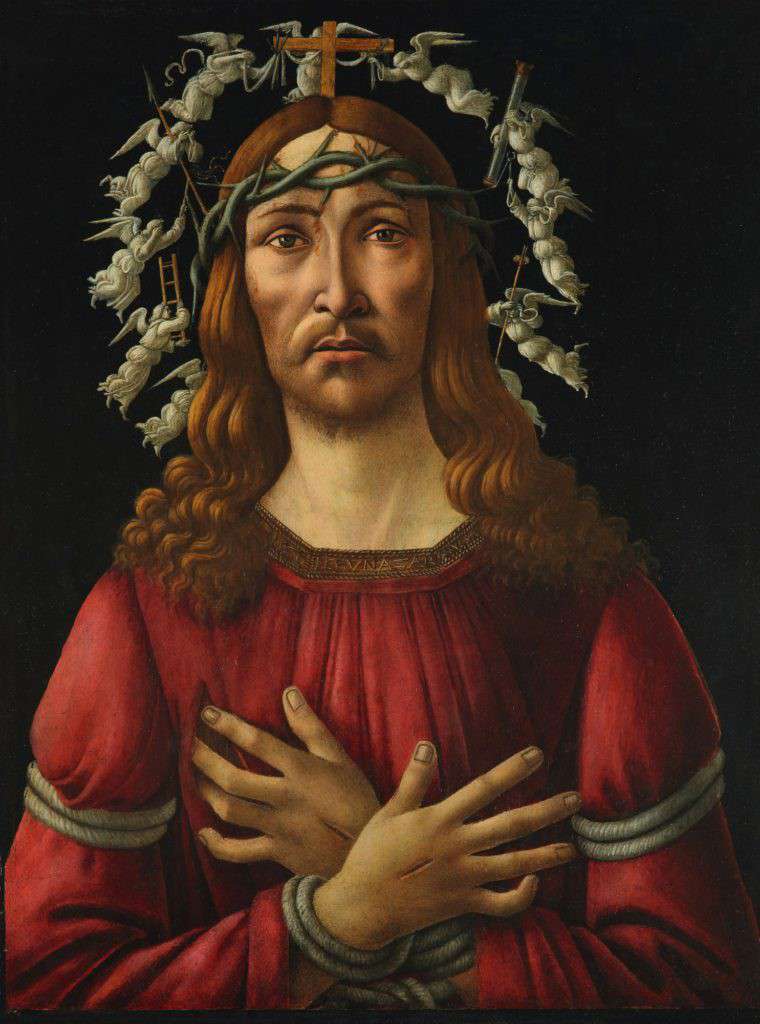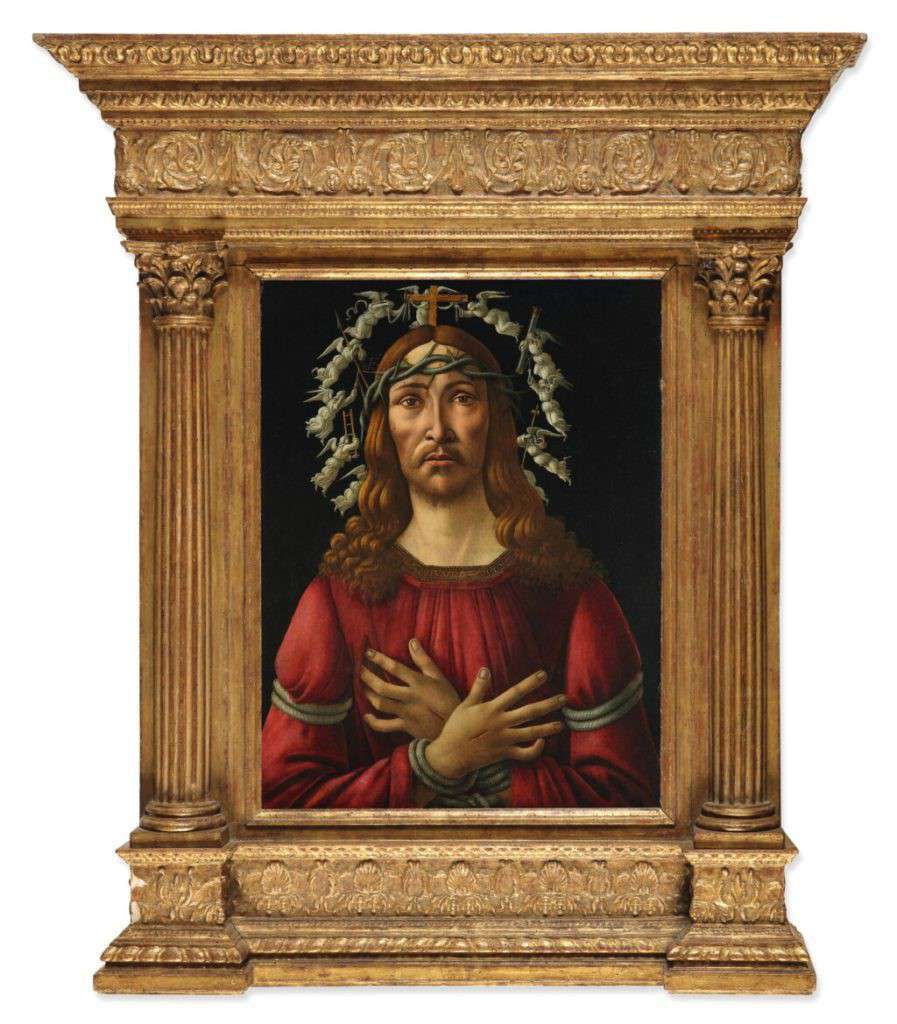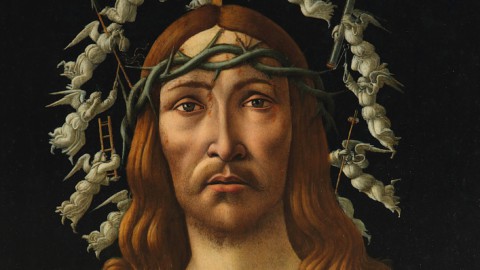Great sale of master paintings and sculptures for Sotheby's, the auction will be held at New York next 27 January 2022, top lot a gorgeous painting by Botticelli, which according to forecasts could well exceed the estimated 40 million.

“The Man of Sorrows”
Florence 1444/5 – 1510
His gaze is steady, but not in the manner of the timeless visions of the Salvator Mundi. He is centered in the photo but not with perfect frontality and symmetry. His eyes, nose and mouth are all bumpy and a slight rocking of the neck suggests that the body is moving into position, as we do when being photographed. It is not a crystalline form that exists independently of us, but a soft, responsive being that is here because we are. She's vulnerable, she's suffered, his eyes are slightly bloodshot, yet the abuse isn't happening now; we are not seeing a close-up of a Passion scene. Her arms and his hands are tied with a rope, but he seems free, his hands crossed over his chest in a deliberate gesture of humility and pity. Suffering is only now part of him. His lips are slightly parted, he sighs or utters an appeal. Even if we are not dealing with any episode, what we see is closely linked to specific moments in the history of the Passion. The dark red tunic and the ropes drag us towards the moment following Jesus' trial, when he is mocked by the Roman soldiers who dress him in a "purple" (Mk 15,17:27,28) or "scarlet" (Mt XNUMX:XNUMX) garment . , royal color, and placed a crown of thorns on his head, kneeling before him and braying: “Hail, King of the Jews!” This moment of mocking reverence rang with holy irony in the ears of Christians, who understood what the soldiers did not know: that what they said mockingly was more than true, because Christ was not only "King of the Jews", but Lord of creation. Holy irony was a trademark of Christians, worshipers of a suffering God; what appears to the rest of the world as an abject and humiliated body, they took as the object of their highest reverence. During the late Middle Ages, images and texts produced in the Latin West focused with increasing fascination on the gruesome details of Jesus' death, thus sharpening the irony.

Exhibitions:
Frankfurt am Main, Städel Museum, Botticelli: Likeness, Myth, Devotion, 13 November 2009 – 28 February 2010, n. 78;
Requested for upcoming exhibition, Minneapolis Museum of Art, Botticelli and Renaissance Florence: Masterworks from the Uffizi, October 15, 2022 – January 8, 2023.
A great return to valuable ancient works, in fact there are also two incredibly important rediscoveries in the auction by other important artists of the Italian Renaissance, Correggio and Andrea del Sarto, as well as a beautiful early work by Giovanni Bellini. Highlights from the northern artists include an eye-catching canvas by Peter van Mol and a jewel-like still life by Adriaen Coorte; highlights by Spanish artists include a late example by El Greco and a luminous canvas by Murillo; highlights by French artists include an enchanting portrait by Largilliere and a monumental still life by Anne Vallayer-Coster. Other strong examples by leading female artists such as Vallayer-Coster anchor this sale, notably two works by Artemisia Gentileschi, a small and delicate still life by Rachel Ruysch and a monumental mythological scene by Sophie Rude. Also leading this sale are two important sculptures: a rare Madonna and Child attributed to Hans Kamensetzer and an Egyptian limestone figure of a man from the late 2350th Dynasty (c. 2290-XNUMX BC).





